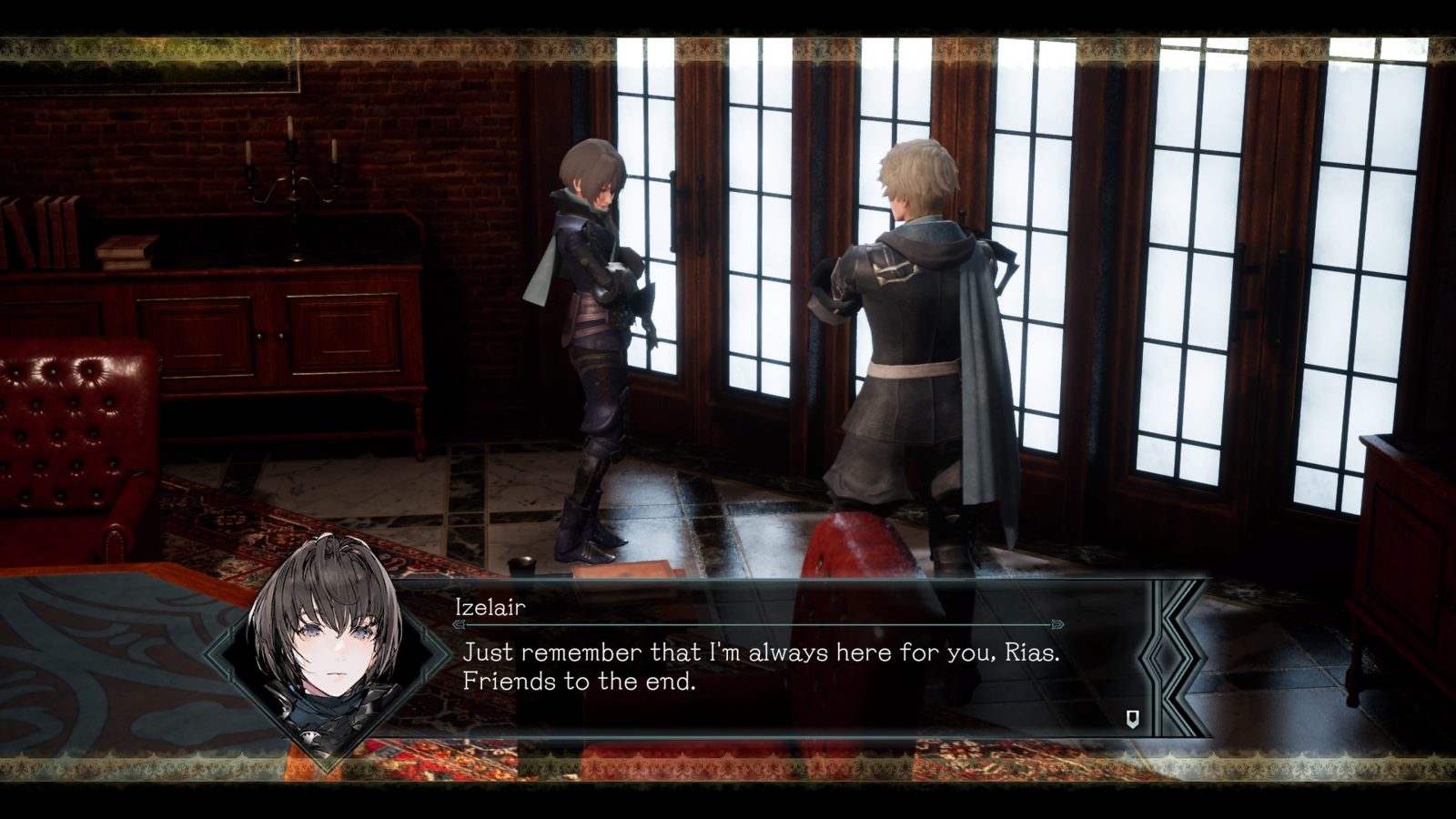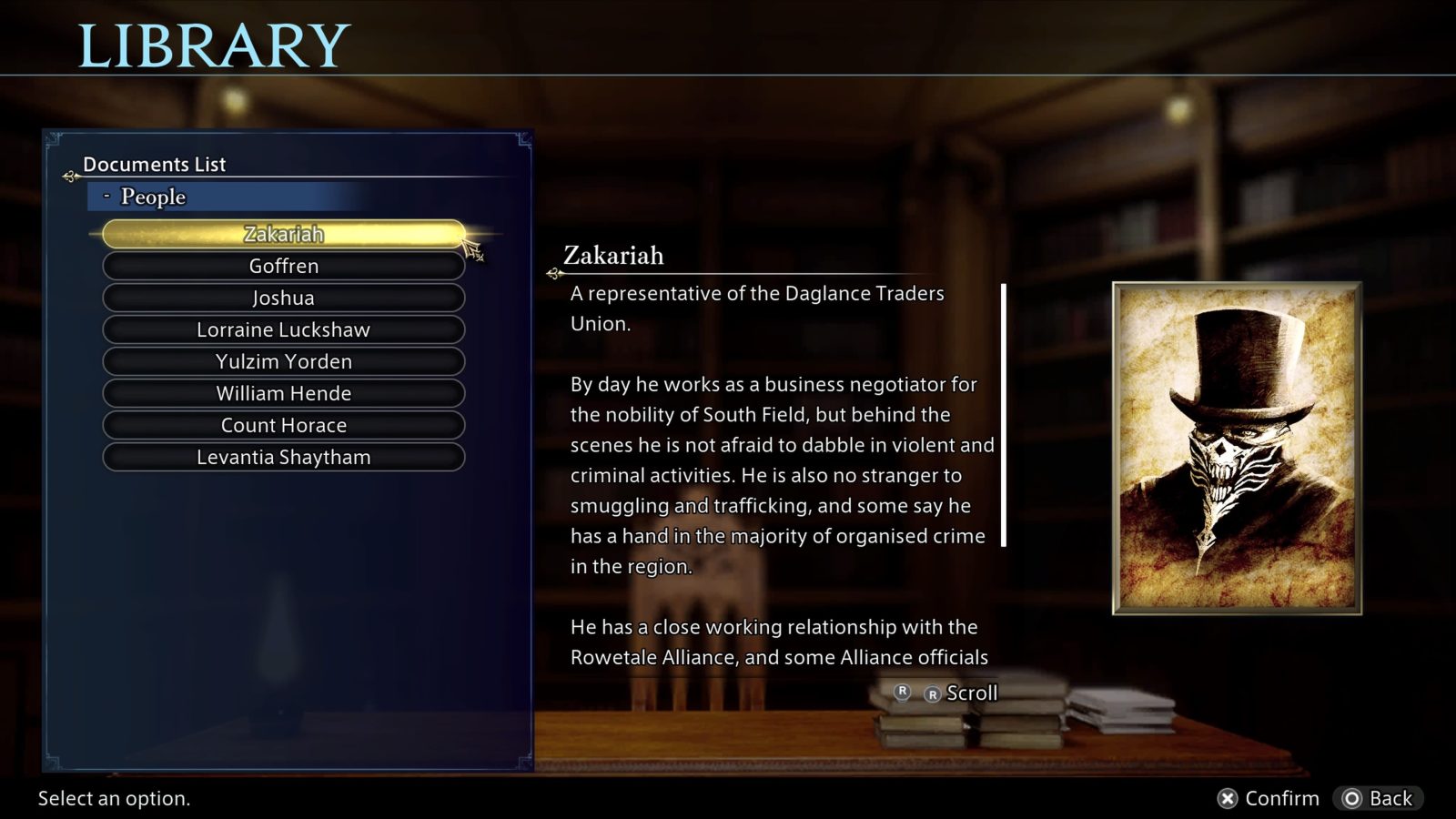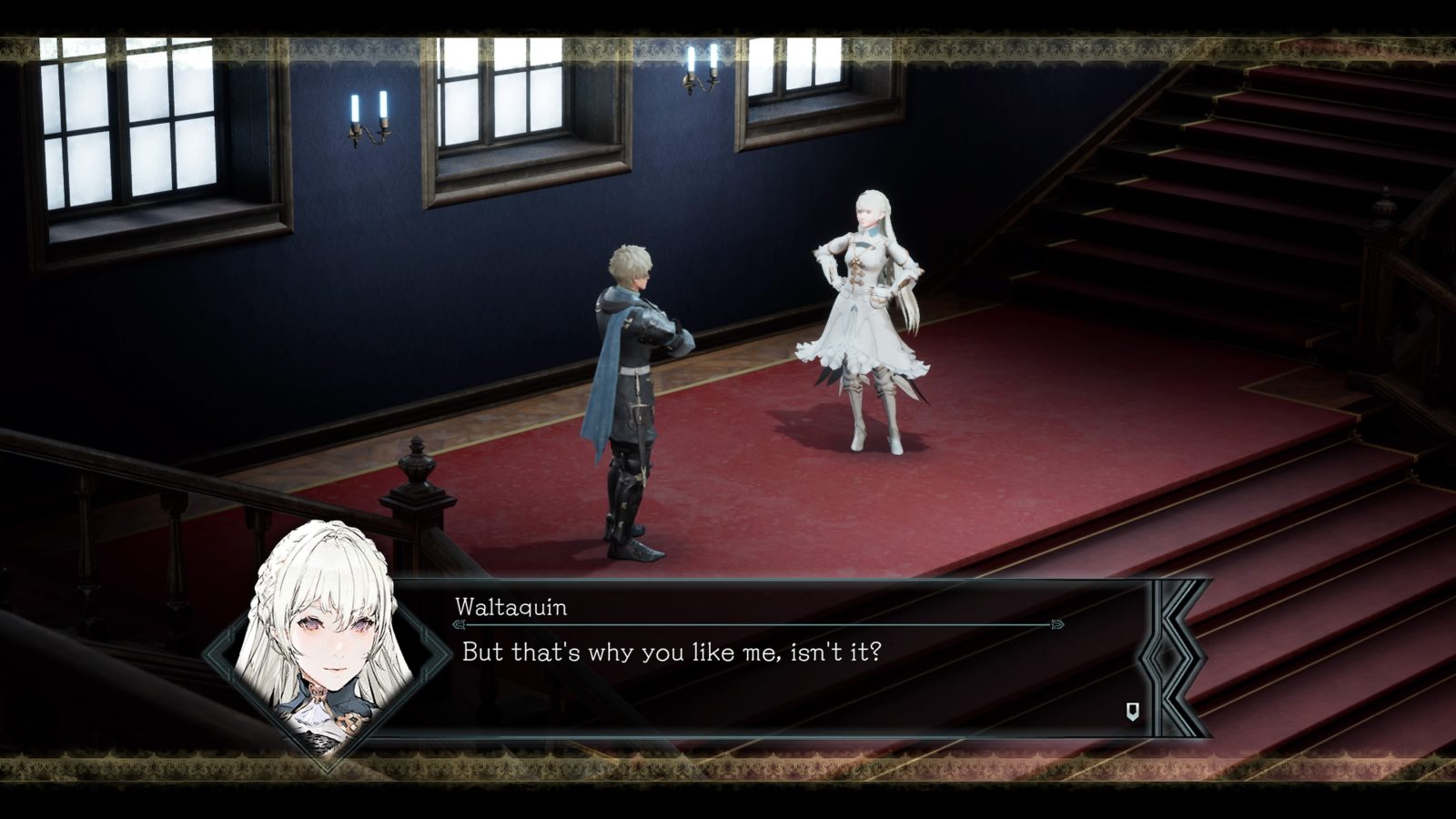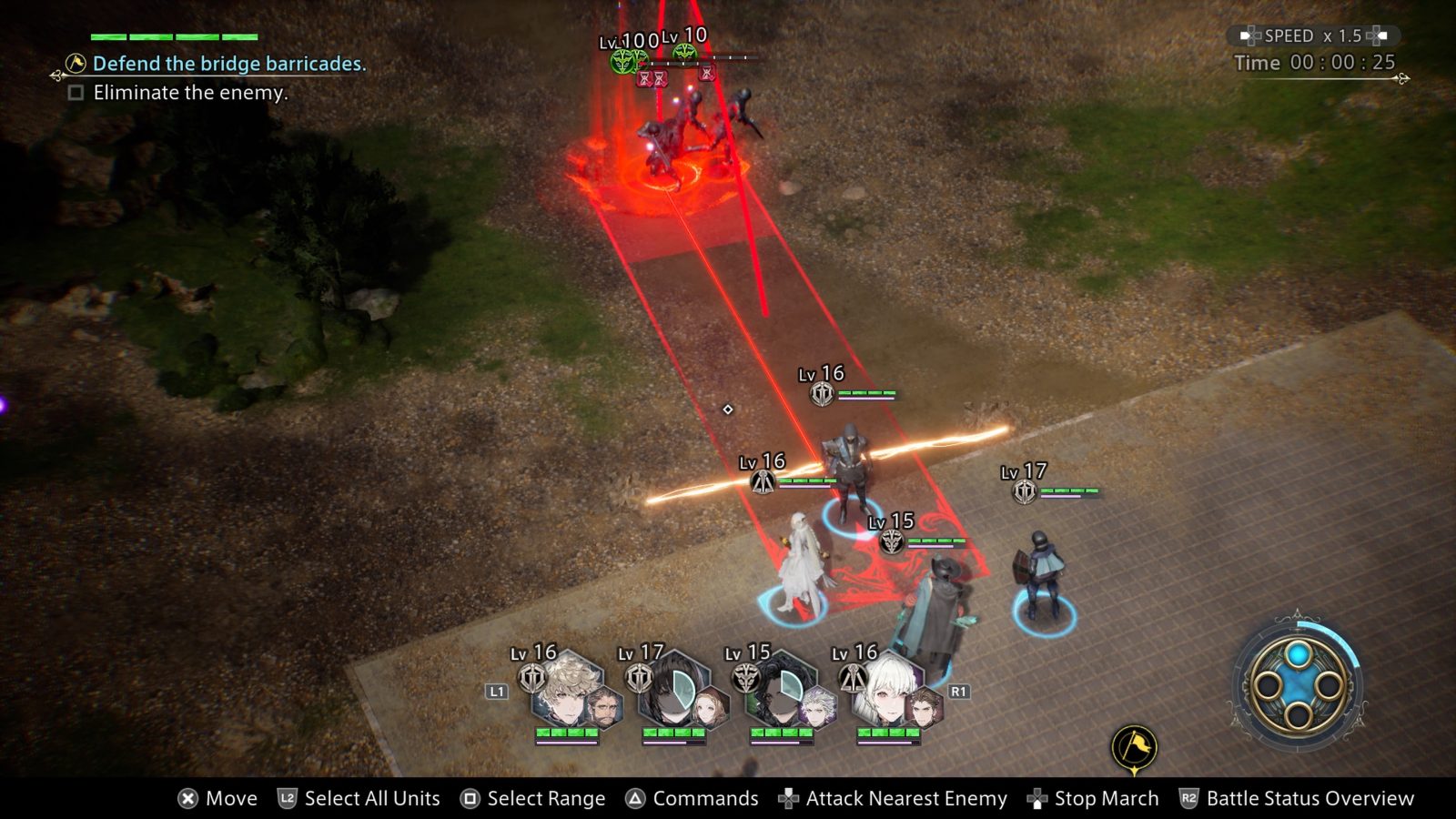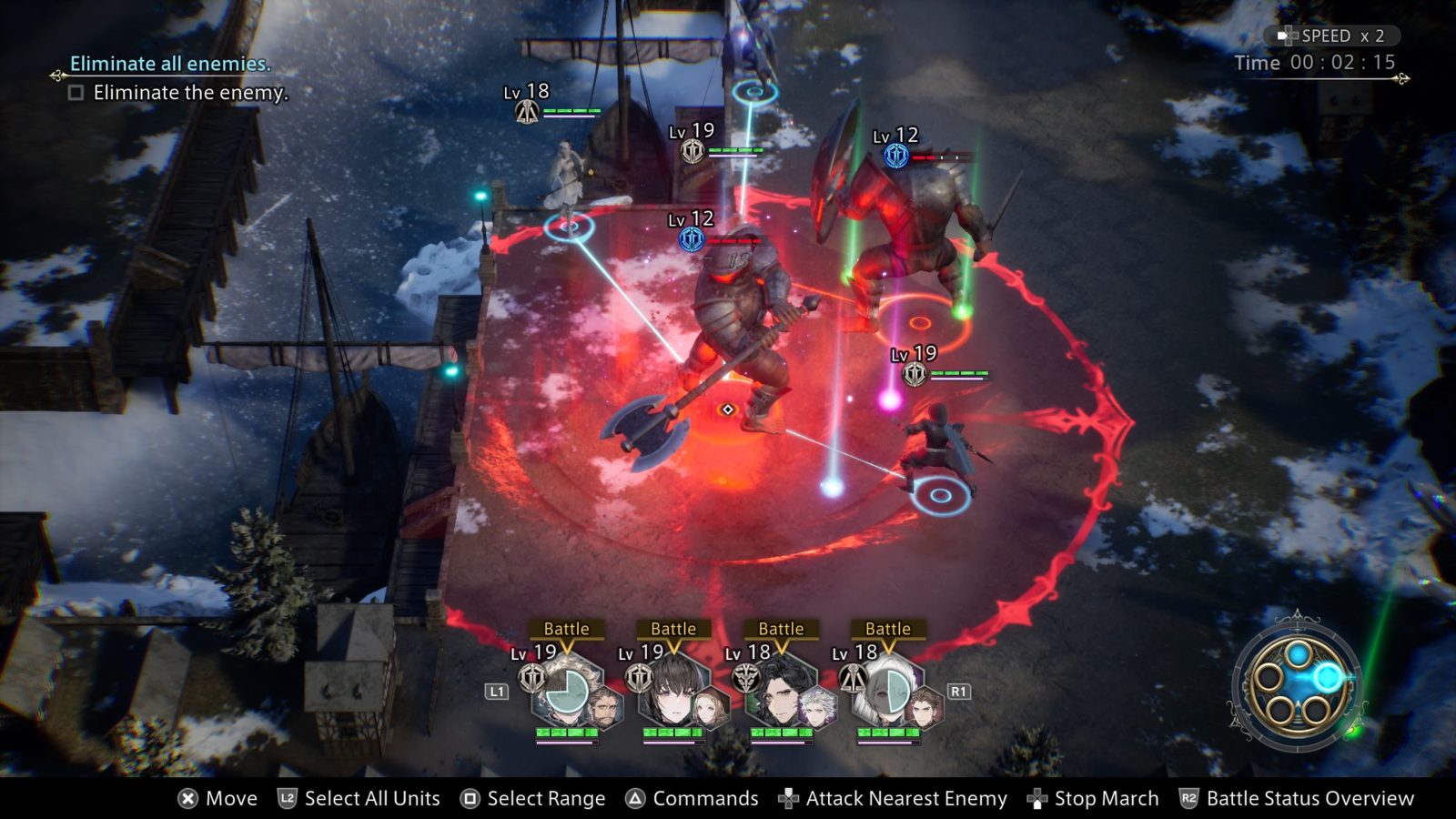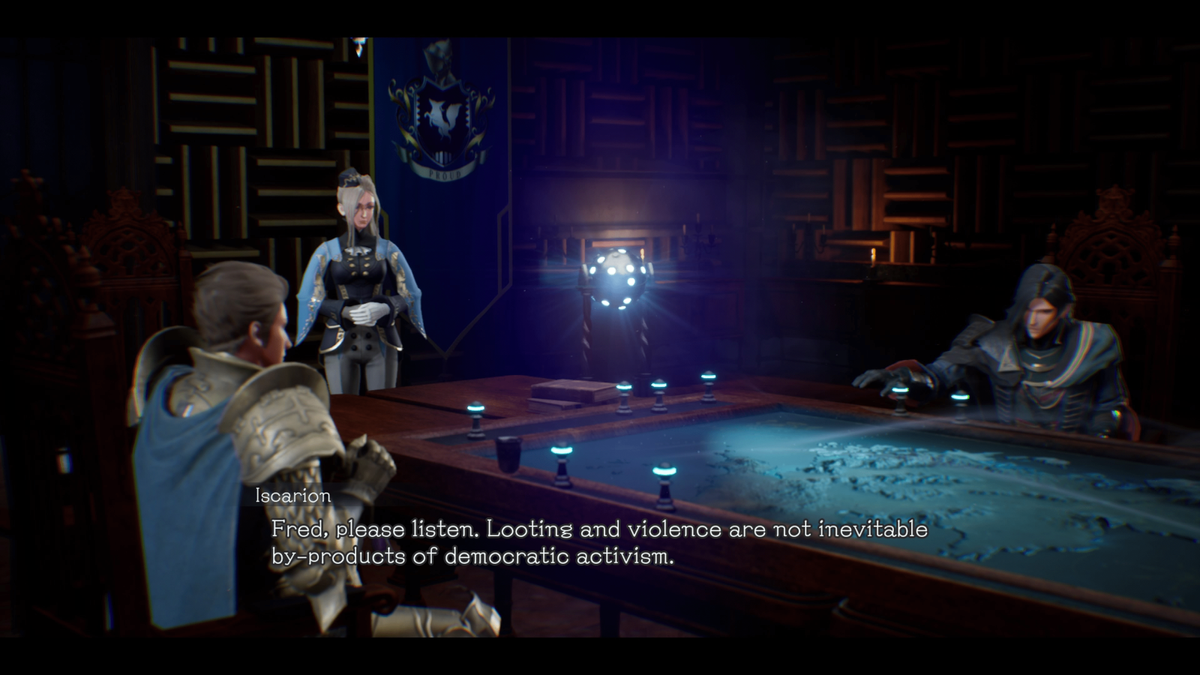
All warfare is based on deception. The DioField Chronicle takes that particular art of war to heart with a narrative filled with all the lies and subterfuge you would expect from a game about politics. This is a game with a grand scale: it drops the player into its fictional island setting, laying out the various factions and philosophies at play. The Diofield Chronicle gives the impression of a thoroughly realized and fictional world that is often as compelling as it is complex. It feels large and ambitious. Beneath all of the grandiose posturing, however, lurks a relatively straightforward game that betrays its ambitions. While not a fatal blow, like any stab in the back, The DioField Chronicle’s contradictory nature is difficult to ignore.
I ended up pretty invested in this bundle of contradictions, but my interest took a while to kindle. The initial presentation of the game leans heavily on vagueness and high-level conflict: you spend a lot of time watching people you barely know sit around a table talking about things you barely understand. I suppose that’s fair. People sitting around talking should be where all of the action happens in a political drama, it just doesn’t make a compelling first impression. The sitting around and talking aspect of the game never really changes, but my appreciation of it did. This is a game where you need to soak in the details.
The DioField Chronicle splits its structure into two phases that I would describe as the “investment” phase and the “pay-off” phase. To spell it out more literally, The DioField Chronicle unfolds over several military battles conveyed in the form of a real-time strategy game, but also has periods of downtime where you walk around a home base and get to know your various pawns – I mean friends. Co-workers? Oh boy, let’s just get out of this paragraph.
This isn’t a game about immediate gratification and neither is this review, so let’s start with the investment phase.
I describe the downtime parts of the game as the investment phase because I spent most of my time in them looking for things to be invested in. As the high-level military talk and the battles themselves weren’t doing much for me off the bat, I appreciated zooming back down into the base and actually getting to know the people involved. The most substantive way to do this comes in the form of side missions which, despite how they sound, often amount to little more than talking to the person with the icon above their head. These conversations give insight into not only the characters themselves but also the philosophies of the different factions and ideals at play in the story. Those aspects of the game world are further expanded upon in the library where you can really get lost in the lore trenches.
Side stories and exposition dumps sound optional, these are just optional details, after all. In most games they certainly would be, but for The DioField Chronicle, I’d argue they’re an essential part of the game. You need to invest in the world of DioField to really get DioField and for the events that follow to have impact. Digging into the characters and the island of DioField sows seeds that grow spectacularly.
Up to this point I’ve whined about what is ultimately an impersonal approach to the game’s core narrative – to be clear, it ‘s not necessarily a bad thing, particularly in tandem with the “investment” phase. One of the big advantages of using an impersonal narrative here is that it keeps you out of the heads of the characters. In a more traditionally told story, being able to fully understand a character is what connects you to the events of the game. With The DioField Chronicle, part of the fun is that all you really have to go off of are the characters’ direct words and actions, and the game is written in a way where those aren’t direct reflections of their true thoughts.
The game’s detached nature elevates the tiny details uncovered in the “investment phase” from fluff into compelling pieces of a puzzle. The intrigue of DioField and its inhabitants was ultimately what hooked me on the game. The DioField Chronicle primarily follows Andrias, who you are told early on has some kind of plan he wants to enact, but you are not told what that plan is supposed to be. All you can really piece together from the start is that it involves becoming mercenaries and slowly working up to bigger and better things from there.
Both Andrias’s plan and his motivations are a mystery. He is neither honest nor upfront, and the best part is that he’s not unique in that sense. There are four “main” characters in The DioField Chronicle and each of their true motivations and ambitions are left unstated. These characters initially work together, but as their ambitions grow, they also conflict with one another. As the game progresses, you piece together who the characters themselves are as well as their relationships with each other.
It’s in these character interactions where the game themes come alive. Andrias and the magicker Waltaquin share an oddly gripping relationship that ties into the game’s understated nature – it’s not quite romantic and neither character clearly states their intentions for the other, but you get the sense that these characters understand each other in a twisted way that later comes to a head. Other characters clash more directly on the politics at play: Fredret has ties to monarchy and prefers that particular system, which later creates a rift between him and Isacrion, who is a knight-errant that would prefer a system more in control of the people. It was in watching these smaller stories play out that I began to take interest in the greater whole of DioField.
This initial glimpse of interest sparks a chain reaction. Now that I was interested in uncovering who the characters were, I wanted to find out more about them. After finding out more about them, I discovered how they tied into the different factions of the world. After understanding the different factions, I had finally reached the point where I was genuinely looking forward to the next session of people sitting around the table and talking about the next political development.
You could consider the “investment” phase to be similar to a mystery game, just not one that requires you to reach any conclusions to finish it. The DioField Chronicle’s writing and optional content leaves plenty of room for you to play detective, which is an interesting use of the game’s interactivity, albeit an unorthodox one.
Of course there is a more orthodox game in The DioField Chronicle, too, which leads us to the “pay-off” phase: the battles. I refer to the battles as the pay-off because they both (finally!) get you into the action and also serve as climaxes to various parts of the game’s story.
The battles tout themselves as taking place in real-time, but in reality mix elements of both a fully real-time game as well as turn-based strategy games. You can freely move your units across a map with a simple point and click, and they will also begin fighting enemies automatically. However, there are also multiple options at your disposal to completely freeze the action, select special skills, and otherwise spend as much time as you want planning out your next move.
Although the real-time twist initially makes the game feel different from other strategy games, it also begs the question of what exactly it adds to the experience. Turn-based strategy design forces a level of commitment on the player’s behalf. Making a decision locks you into the consequences of it, with the trade-off being that you have as much time as you want to ponder your options. With The DioField Chronicle taking place in real-time, you’d expect these elements to switch places: you might have less time to make your decisions, but also face less harsh consequences.
Since The DioField Chronicle ends up being more of a hybrid of styles with its ability to freeze the action, what you really end up with is a game with lenient consequences and infinite time to face them. That does not create a problem on its own, it just means the game has to push its systems and expectations for your strategies harder than it might if you were on a timer. What does create a problem is that the battle mechanics generally refrain from making that push.
Battles on the island of DioField revolve almost entirely around positioning. Friend and foe alike have different attack ranges, so you always need to be mindful of your approach and how you start a fight. While positioning can have a multitude of implications, its most practical purpose comes in the form of hitting enemies from behind. Backs play an important role for most people, so attacking that weak point is incentivized with a large damage bonus. In practice, this isn’t that difficult to accomplish, as you can usually just send one unit up to an enemy and then have another one walk up behind them while they’re fighting. Some characters’ special skills even skip that step and will automatically warp you behind an enemy.
The back attack dominates your approach for the majority of the game. It’s the fastest way to take out enemies, especially when combined with the right skills, so there’s little reason to avoid doing it. Perhaps to cut to the heart of the issue, there’s little preventing you from doing it, which makes many of the encounters fall into a similar rhythm of approach. Set up your back attack and then spam skills until the enemy dies.
Skills are arguably where the most variation in potential of the gameplay lies. Every unit belongs to a specific class with access to specific sets of skills depending on the weapons you equip them with. The way you customize your characters can make a big difference in how useful they are, as some classes specialize in fighting other classes. Some skills take advantage of a class’s unique offensive capabilities, while others focus more on support roles like healing allies or placing status effects on enemies. What further adds to the customization is that each of your main units can “equip” a sub unit, which gives them free access to that sub character’s skills in addition to their own, which lets you smooth over some of the weaknesses of your team.
All of the different classes and ways to mix and match their various skill sets gives the impression that there is a deep game system to play with here, and on some level that is true. By the end of the game, I concocted a satisfying set up where my designated horse guy (not the official class name) would pounce into a group of enemies to soften them up, my gun girl (still not official) would hit everyone with debilitating status effects, and Andrias (a real name) would clean them up with his extremely powerful “Assassinate” skill, which got a bigger damage increase on enemies with status effects. I also had a shield person who would heal my team or stun the bigger enemies and bosses if they tried to fight back.
While that was my peak, I reached a point about three or four hours into the game where I was already overwhelming it completely. I relied a lot on Andrias and his assassinations, but even in the few situations where you have to play without him, the game never truly gave me a run for my money.
Battles began to fall into a similar, methodical pace where I’d repeatedly execute the same strategies multiple times a mission and come away with success, only to do it all over again for the next one. You can set the game to run at one of three speeds, and the standard speed quickly wore out its welcome as I grew more comfortable with the mechanics, so I cranked it up and was basically running through the game on both double speed and auto pilot. At a certain point, it stopped feeling like a real game and more like an obligation to uncover the next bit of the political thriller I had slowly warmed up to.
Basically, the “pay-off” phase does not live up to the “investment” phase in terms of compelling complexity. The battles can be fun initially, they just don’t hold up to any kind of scrutiny. You can customize the characters in fun ways, there’s just little incentive to do so once you have found something that works. Disappointingly, this is especially true on replays, as the New Game + feature does not alter the levels of the enemies at all, so you’re just facerolling through the game on a level beyond what you were likely already doing. I believe there’s fun to be found in these systems, it just never pushes the player hard enough to make them shine, which is a shame.
What prevents this wound from being fatal is that The DioField Chronicle never dwells too much on any given battle. Especially once you dial up the game speed, most battles are over in about three to five minutes, which almost makes the battles serve as a nice if mindless change of pace from the otherwise heavy narrative. If I had to pick, however, I’d rather that both sides of the game were carrying the experience equally, and with the battles being the way they are, I hesitate to say that The DioField Chronicle fully lives up to its concept as a game.
The DioField Chronicle
Good
The DioField Chronicle mixes the complexity of a slow-burn political thriller with a deceptively straightforward strategy game. I was pleasantly surprised with where my investment in the world of DioField led me, but the pay-off off the battle mechanics does not match the narrative destination.
Pros
- Piecing together the story is compelling
- Game moves at a brisk pace
Cons
- Unlikely to immediately hook you
- Little reason to experiment in battles, particularly on replays

